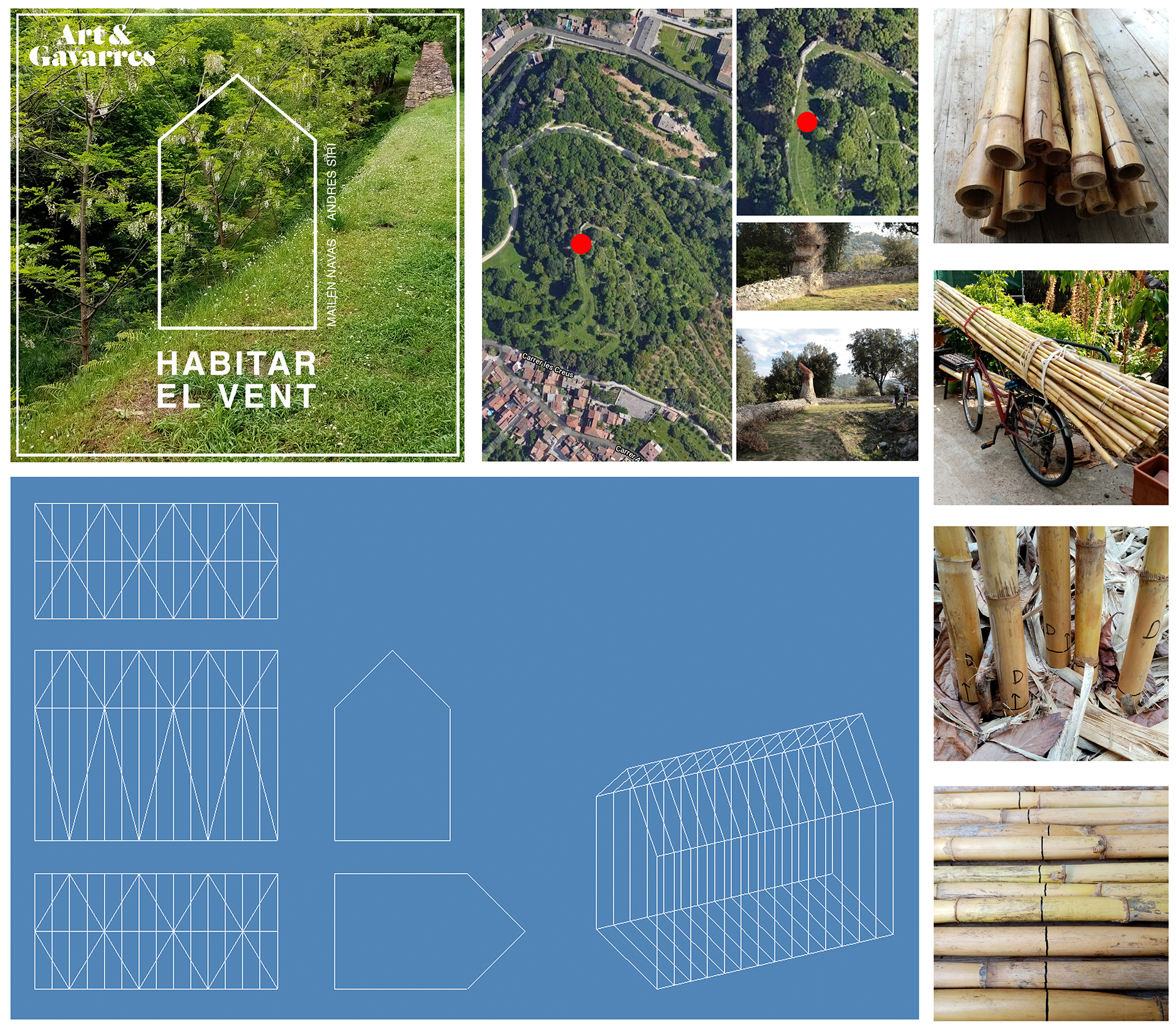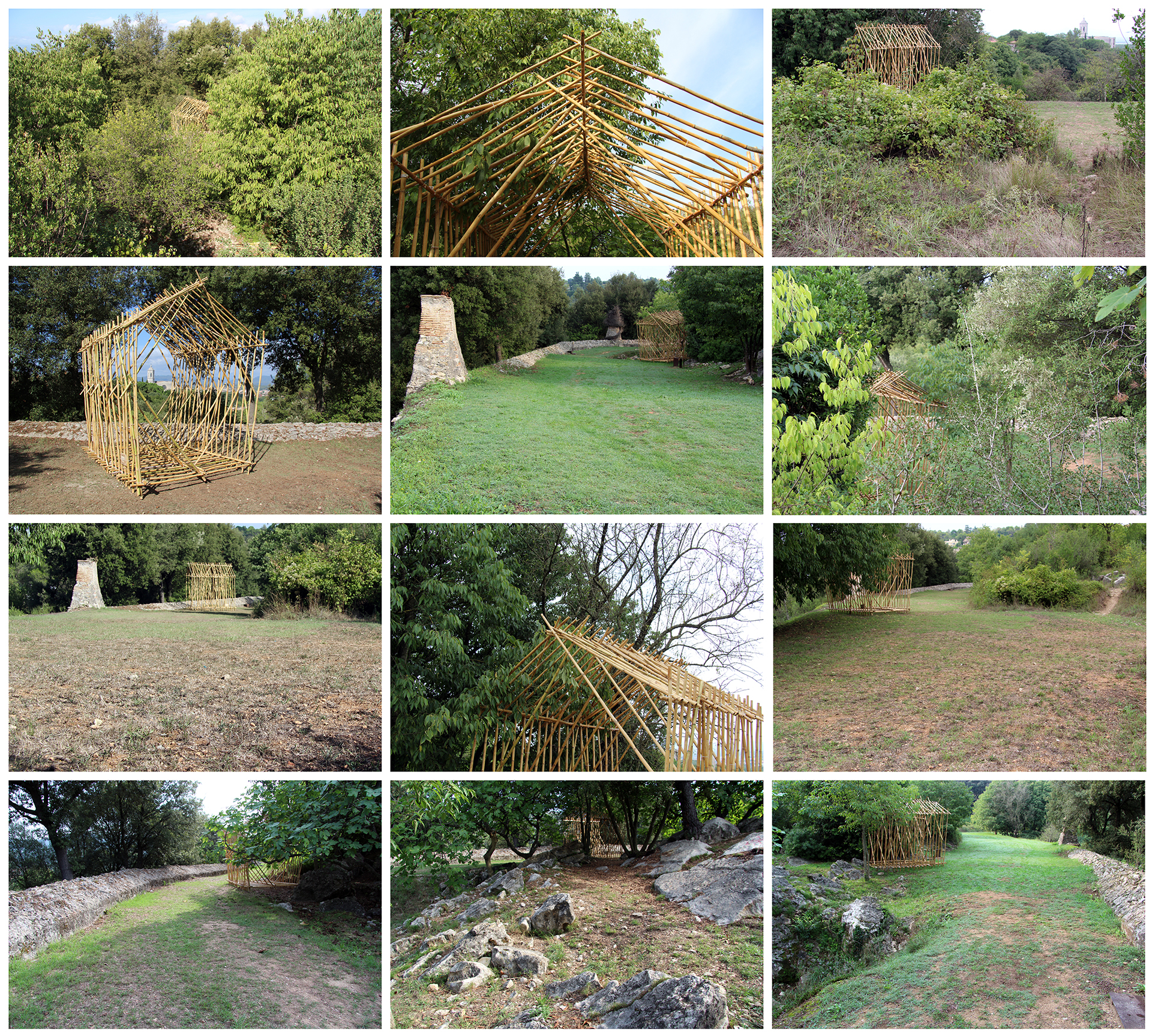

Art & Gavarres
Festival Internacional de Land Art
Habitar el viento
Una capilla, una casa, una ermita, una cabaña, un refugio, un fuerte o una barraca. Una estructura precaria de cañas huésped de la naturaleza. El viento la posee, la inunda, la invade, se apropia de ella. Y ella es viento, y lluvia y camino. No tiene propiedad y todo lo que posee es aquello a lo que pertenece. Su pertenencia está en lo otro. En el viento, en la lluvia y en el camino. Solo puede ser su lugar el estar en camino.
El viento es un sinónimo de peregrinación y de la fugacidad de las cosas. Caminar con el viento sería una forma singular de habitar. «Paisaje» en el Lejano Oriente significa aspecto del viento. Así el paisaje pierde lo fijo (inherente a la tierra) y recibe el carácter de algo que fluye o se derrama.
Extraído de un texto de Byung-Chun Han
La instalación Habitar el viento no permanece anclada a la tierra, realiza una peregrinación hacia la Montaña de la O. Su estructura discurre como el viento, se mezcla con el paisaje cambiante hasta casi desaparecer en ella. Haciendo apenas perceptible su presencia sigue la línea ondulante del muro de piedra de la mina de agua, camino de las cruces, entre hileras de olivos, brotes y cepas, hinojos e higueras.
Inhabit the wind
A chapel, a house, a hermitage, a cabin, a shelter, a fort or a hut. A precarious reed structure that is a guest of nature. The wind possesses it, floods it, invades it, takes it over. And it becomes the wind, and rain and road. It has no property and all it possesses is what it belongs to. Its belonging is in the other. In the wind, the rain and the road. To be on the way is the only possible place.
The wind is a synonym for peregrination and the fleetingness of things. Walking with the wind would be a unique way of inhabiting. “Landscape” in the Far East means the wind’s landscape. Thus, the landscape loses its immomability (inherent to the earth) and receives the character of something that flows or poures.
Extracted from Byung-Chun Han text
The installation Inhabit the wind is not anchored to the earth, it makes a pilgrimage to the Mountain of the O. Its structure runs like the wind, mixes with the changing landscape until it almost disappears in it. Making its presence barely perceptible follows the water mine stone-wall’s wavy line, the crossing path, between rows of olive trees, shoots and vines, fennels and figs.